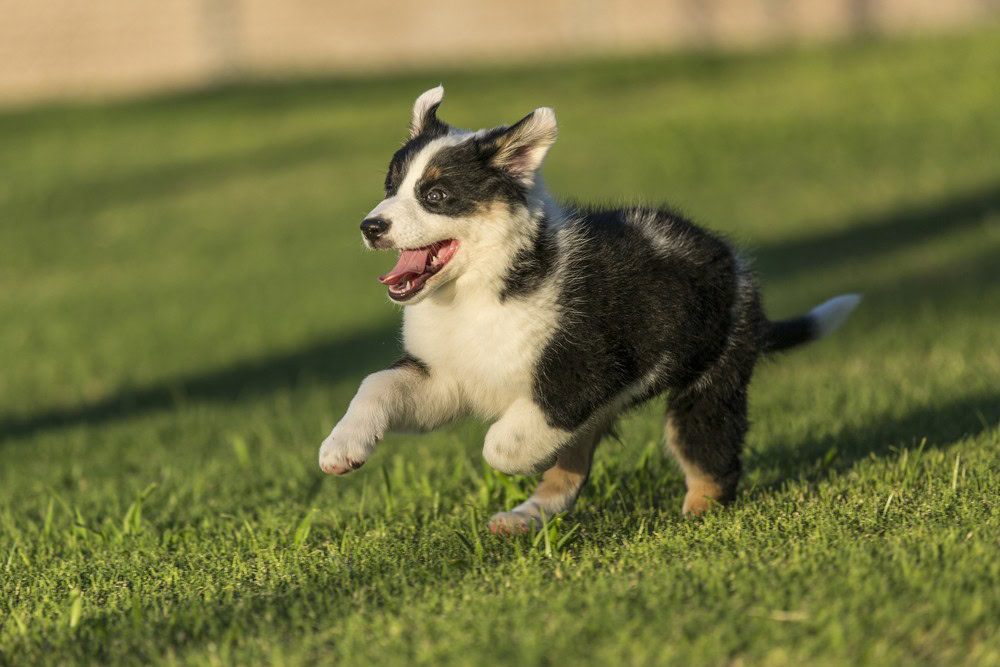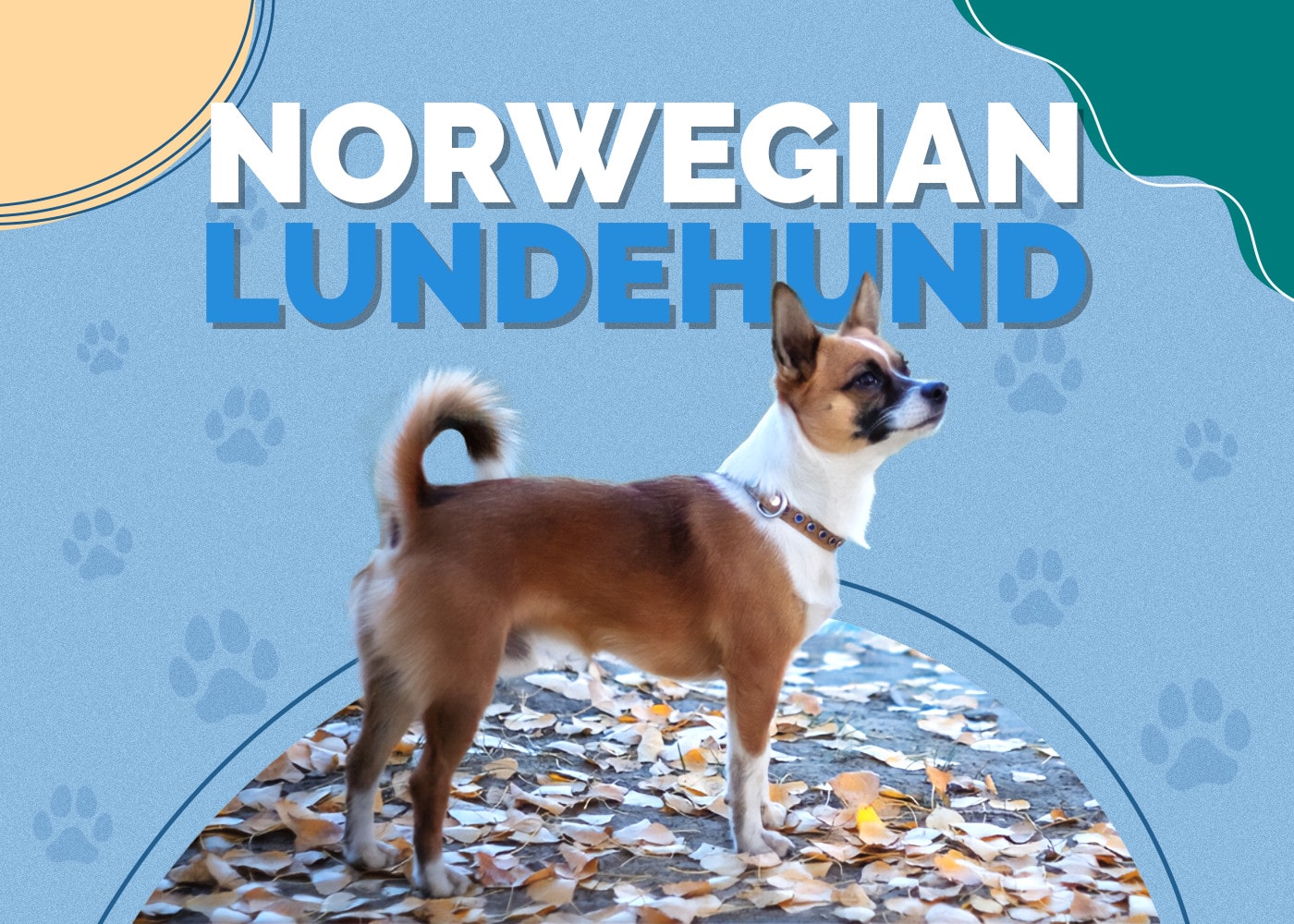Texas Heeler Dog: Breed Info, Pictures, Personality & Facts

Updated on

Height:
16–22 inches
Weight:
25–50 pounds
Lifespan:
12–15 years
Colors:
Tan, blue, black, tricolor
Suitable for:
Herding, family dogs, active singles, farm dogs
Temperament:
Affectionate, energetic, alert, loyal
Texas Heelers are beautiful, generally well-behaved dogs that may also be called the Queensland Heeler or the Blue Heeler. Texas Heelers are born to be herding dogs, which can be seen through their ancestry, as they are crossed with the Australian Cattle Dog and the Australian Shepherd. These are two of the most world-renowned herding breeds and have passed down these strong genetics to the Heeler.
Texas Heelers are considered designer dogs even though they have a work ethic that beats out many other breeds. Characteristics often attributed to these canines are intelligence, alertness, trainability, and an energetic and highly active nature. They are also quite loving pets to members of their family and don’t often struggle to meet new people, which is good, considering how adorable the dog is. They are not great fits for people who are relatively inactive or don’t at least have a large, fenced-in backyard.
Texas Heeler Puppies

A Texas Heeler has become quite a common dog, especially in its namesake state. This makes the dog more affordable. It also means that if you are looking to adopt one, consider looking into your local shelters first, as many need their own forever home.
When you bring a Texas Heeler home, be ready to have a loyal dog by your side. These pups are very active, so regular training and outdoor activities are essential to keep up with their high energy levels. They are generally healthy dogs but remember to have regular vet checkups to prevent any common canine disease and follow your vet’s advice on any treatment or special diet.
Get ready for the adventure of a lifetime of caring for a Texas Heeler. Keep reading the Texas Heeler’s full care guide to know what they need to grow into happy and healthy dogs.
3 Little-Known Facts About the Texas Heeler
1. Most Texas Heelers have bobbed tails at birth.
There are some dog and cat breeds that have a natural bobtail. This means that from birth, the tail is very short or missing entirely. A naturally bobbed tail like this is normally caused by a mutated gene expressed before birth. Not all Texas Heelers are born with this bobtail, since the Australian Cattle Dog has a standard tail, and Australian Shepherds often have bobbed tails. It depends on the strength of one parent’s genes over the other.
2. Texas Heelers may come from multiple mixes of different breeds.
Typically, a hybrid dog has two specific parents to gain the name of the breed. For example, an Aussiedoodle is always a mix of an Australian Shepherd and a Poodle. The case is slightly different from Texas Heelers. They may consist of crosses between more than the two breeds and still get the name of a Heeler. The Australian Cattle Dog is the parent that qualifies it as a Heeler, while the Australian Shepherd may change out for a Border Collie by some breeders and still be sold as a Texas Heeler. If the exact breeding is important to you, be sure to check with the breeder.
3. They are bred for herding purposes.
This dog is a combination of super-herders. Both the Australian Cattle Dog and the Australian Shepherd are herding dogs. The Australian Cattle Dog was bred in Australia by cattle farmers who needed help herding their cows on the large ranches. They were the result of reproduction with less-hardy English dogs and the native wild dog, the Dingo. They ended up with a distinct blue coat and thus earned the name “Blue Heeler,” part of which passes down to the Texas Heeler.
Australian Shepherds, confusingly, are not Australian dogs at all. They are entirely American, also bred to herd cattle, but in the Western ranches of the United States. The crossing of these two dogs gives the Texas Heeler the herding drive ingrained deep in its genetics.
Temperament and Intelligence of the Texas Heeler 🧠
The foremost trait inherent to a Texas Heeler is its herding capabilities. It may even practice these with small children and other pets in the home. The Texas Heeler has a high amount of intelligence, inherited from both of its parents. This wit typically doesn’t manifest in an unwanted or unruly cleverness, but instead, a single-focused mindset for the task at hand.
The dogs have a high trainability, especially with a trainer who practices a firm hand and consistent commands. If they are living in a home with kids, they need to be trained not to chase and practice their herding. They would never intentionally hurt anyone, but at times, they can be aggressive in their tactics.
Are These Dogs Good for Families? 🏡
These dog breeds can be good fits for families, especially those with kids who are a little older. They need to be trained not to chase or herd with toddlers, so they don’t accidentally knock them over. They are a loyal breed, as well as being energetic. This combination makes them the ideal playmate for children.
Does This Breed Get Along with Other Pets? 🐶 😽
Although they generally get along well with children and other members of a household, they may not handle other animals as well. A large part of this comes down to whether they are socialized early on. This is essential in the training of your Texas Heeler if you would like them to live well with other animals in “their” space.
Things to Know When Owning a Texas Heeler
Food & Diet Requirements 🦴
Even with the high amount of energy that a Texas Heeler puts out every day, they are only moderately-sized dogs and don’t tend to overeat. An adult Texas Heeler generally needs around three cups of food a day. To support their daily activity, the food they eat should be calorie-dense and full of needed nutrients to keep up their muscle mass and bodily systems. Try to find a dog food specially formulated for active breeds, matching it up to their medium stature and their life stage.
Exercise 🐕
The Texas Heeler needs much more exercise than your average dog breed. They should be walked an average of 14 miles a week if they don’t have free roam of a farm or ranch. Keep in mind that because this is an intelligent dog, they love to have jobs to do. Try to incorporate learning tricks and training sessions into their exercise time to work their brain as well as their body.
Walk for 30 minutes twice a day, or go to an area where they can run off-leash. Taking a puppy to a dog park is a great way to work on early socialization. Texas Heelers also make for great hiking buddies.
Training 🦮
These dogs are easy to please, and their understanding and wits make them a quick study for learning new things. They are not an especially stubborn breed, making training even easier. Just like all other breeds, they don’t take well to negative reinforcement or rough treatment.
One of the most prominent facets to focus on in training is whether you would like your Texas Heeler to practice its herding tendencies. If not, you will have to work hard to train this out of the dog, especially if they are going to be around young children. If you do, all it takes is a bit of refining to capitalize on this incredibly useful trait, and they will thank you for giving them such a fun job.
Early socialization is crucial while training a young puppy. The dogs are loyal and affectionate to their masters, but without early socialization, they may resent having anyone or anything else around.
Grooming ✂️
The Texas Heeler typically has a short coat, making it a reasonably easy job to keep up with grooming. However, they could have the long hair of a parent Australian Shepherd. If they do have long hair, try to brush them out weekly at least. A Texas Heeler may be sensitive to touch, so watch out for this when grooming them. Practicing a normalized routine of grooming from a young age helps them become accustomed to regular grooming.
Texas Heelers need their teeth brushed multiple times a week to protect from tooth decay and prevent bad breath. If they don’t get to run around on rough surfaces, trim their nails frequently. If their ears fold over, keep them clean and free of moisture by checking them daily.
Health Conditions ❤️
These pups are relatively healthy dogs, and although there is a wide range of health issues they might suffer from, they do not tend to occur frequently.
- Deafness
- Epilepsy
- Cataracts
- Hip dysplasia
- Elbow dysplasia
- Distichiasis
- Osteochondritis dissecans
- Progressive retinal atrophy
- Collie eye anomaly
Male vs Female
There are not many noticeable differences between male and female Texas Heelers. Female Texas Heelers are generally slightly smaller than males, with a less muscular build. Sometimes male Texas Heelers may resemble more of a Blue Heeler than females.
Final Thoughts
Texas Heelers are a great dog for farmers, active singles, and those with large families and wide-open spaces. They need a great deal of activity to stay as healthy as possible for as long as possible. Keep in mind that they require early socialization to live contentedly with other animals and sometimes even young kids.
Anyone willing to invest the time into the maintenance and entertaining of this dog is sure to find them highly agreeable, extremely loyal, and affectionate pets.
See also:
- Cock-a-Tzu (Cocker Spaniel & Shih Tzu Mix): Info, Pictures, Facts
- Brindle Pitbull Dog: Breed Info, Pictures, Personality & Facts
Featured Image Credit: Jones Stillshots, Shutterstock













